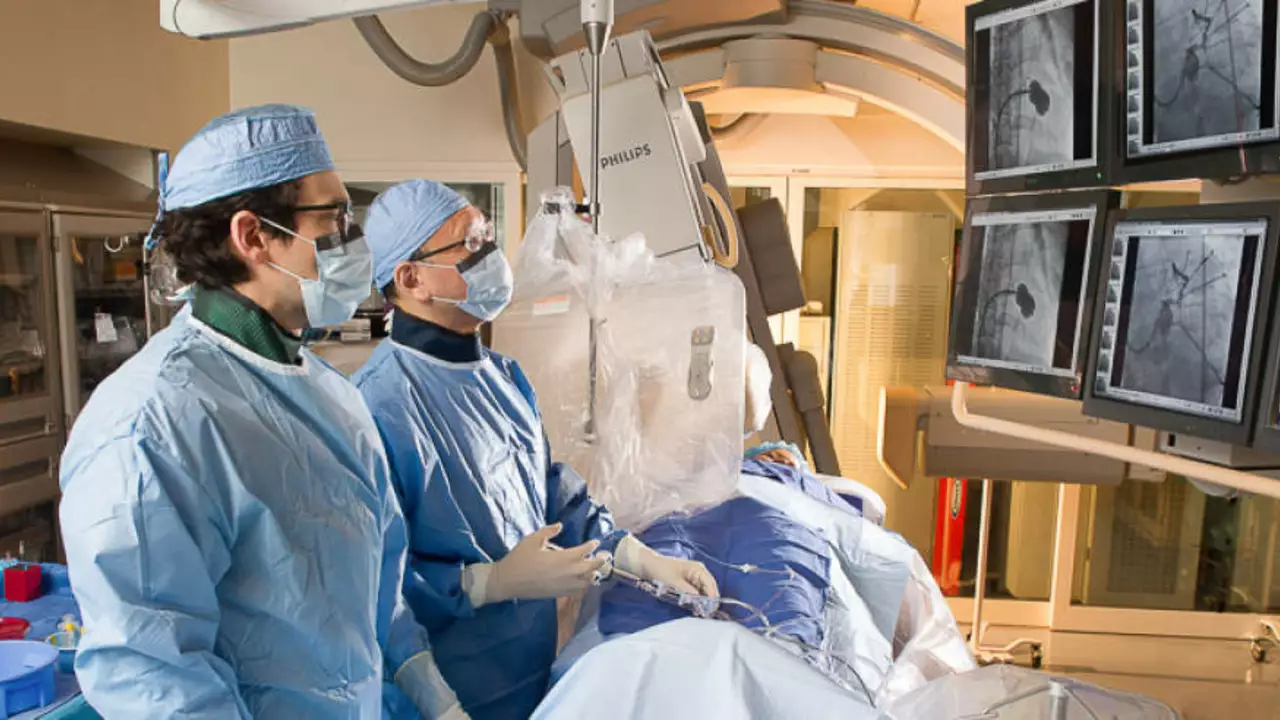Interventional Radiology: What It Does and How It Helps
Interventional radiology (IR) treats many conditions using imaging to guide tiny tools through small skin openings. It often replaces open surgery, so patients have less pain and shorter hospital stays.
If you worry about big operations, IR is worth asking about. Doctors can open blocked arteries, drain abscesses, remove clots, place stents, block blood flow to tumors, and target cancer with local treatments.
Common Procedures
Here are common IR procedures and why they matter.
- Angioplasty and stents for narrowed arteries.
- Embolization to stop bleeding or shrink tumors.
- Image-guided biopsy to get accurate tissue samples.
- Catheter drainage of abscesses or fluids.
- Ablation for small tumors using heat or cold.
Most procedures use X-ray, CT, or ultrasound so the team can watch instruments in real time. You might have local numbing and sedation, or general anesthesia for complex cases.
Preparing, Risks, Recovery
Preparation is straightforward: follow fasting rules, bring a medicine list, and ask about blood thinners. Your team will tell you when to stop or resume drugs like warfarin or DOACs.
Risks are real but usually lower than open surgery. Expect possible bleeding, infection, contrast reactions, or damage to nearby structures. The team minimizes risks with sterile technique, careful imaging, and monitoring.
Recovery is often quick. Many people go home the same day. Avoid heavy lifting for a few days, keep the access site clean, and watch for fever or increasing pain.
Who benefits most? People with vascular disease, some cancer patients, those with blocked ducts or urine flow, and people needing precise biopsies are good candidates. Ask your doctor if IR fits your case.
Questions to ask: How many of these do you do each year? What are the chances I’ll need open surgery later? How long will recovery take? Who will follow me after the procedure?
Interventional radiology gives practical options that often cut recovery time and pain. If you want less invasive treatment, bring up IR at your next appointment.
Imaging choices matter. Angiography uses X-ray and contrast to map vessels. CT gives fine detail for complex anatomy. Ultrasound avoids radiation and is great for soft tissues and guiding biopsies. Your team chooses the best tool for a safer, faster procedure.
Quick examples: a patient with leg cramping walked without pain after angioplasty and a small stent. A person with a painful liver tumor had embolization and felt less pain within days. A blocked kidney was fixed with a tiny catheter and the infection cleared.
Cost and access matter. IR can be cheaper than open surgery because hospital time is shorter. Still, check coverage and ask for an estimate. Some centers offer bundled pricing for procedures and follow-up.
Start the conversation. Ask your specialist if an interventional radiology consult makes sense. It may open a less invasive path to treatment and get you back to normal faster.
Want resources? Look for hospital IR pages, patient stories, and practical prep guides before your appointment. Bring questions and your medicine list.
As a blogger, I've been exploring the critical role of interventional radiology in treating Deep Vein Thrombosis (DVT). This innovative approach uses imaging techniques to guide small instruments, like catheters, through blood vessels to break up or remove clots. It's less invasive than traditional surgery and can significantly reduce the risk of post-thrombotic syndrome. Additionally, interventional radiology offers quicker recovery times and less discomfort for patients. Truly, this advancement in DVT treatment is a game-changer.

